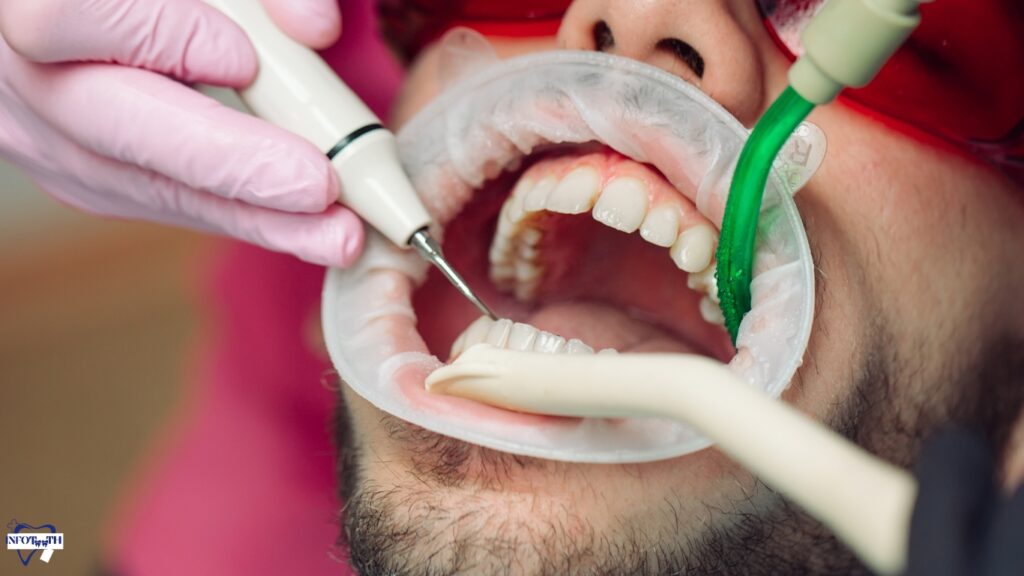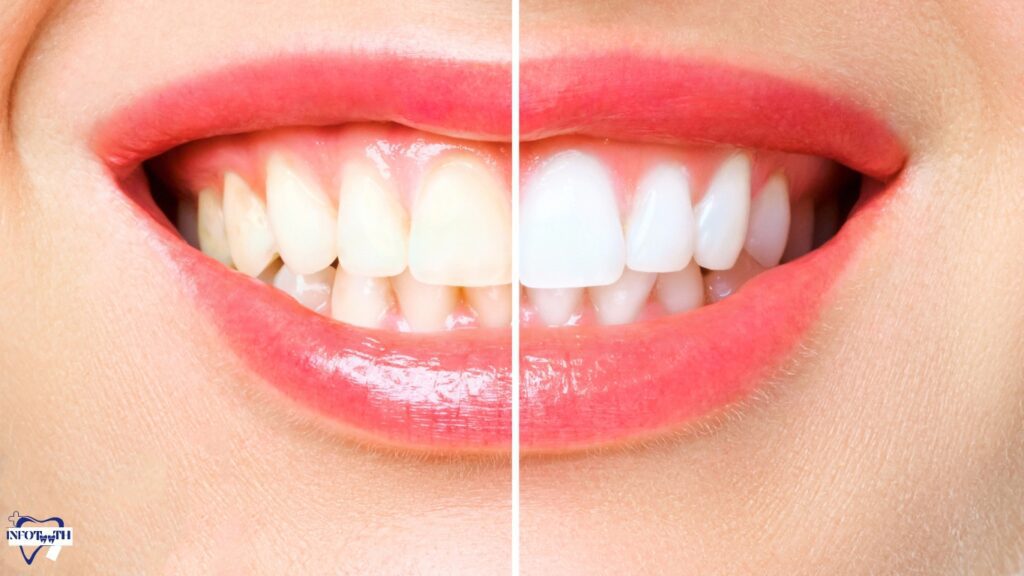Teeth with a visible misalignment, known as snaggletooth teeth, are not just an aesthetic problem; they affect one’s oral health and self-esteem. This dental issue makes it difficult to maintain good hygiene since heredity, misaligned teeth, and lifestyle choices influence it. In this investigation, we disentangle the complexities of snaggletooth teeth, illuminating the causes and symptoms.
Table of Contents
Revolutionary remedies that offer not only cosmetic enhancements but also comprehensive dental health.
Signs and Symptoms of Snaggletooth Teeth
There are several indicators that snaggletooth teeth are present, and each one affects the functional and cosmetic elements of oral health.
Visible Misalignment:
The most obvious symptom is when one or more teeth are positioned incorrectly. This mismatch affects overall face symmetry and frequently results in a noticeably lopsided grin. People may have appearance-related self-consciousness, which can impact their confidence in social situations.
Having Trouble In Cleaning:
Keeping your teeth in good dental health can be difficult if you have crowded teeth. Uneven teeth alignment leaves gaps that are difficult to clean with conventional brushing and flossing techniques. This hard-to-clean surface raises the possibility of plaque and tartar accumulation, which raises the risk of cavities and gum disease.

Impact on Overall Oral Health:
Beyond aesthetic issues, teeth with snaggletooth can significantly impact general dental health. The misalignment may result in temporomandibular joint (TMJ) disorders, which can be uncomfortable and impair jaw movement. Nutritional deficits and digestive issues may also arise from the impaired chewing function.
Causes of Snaggletooth Teeth
There are several different reasons why people get snaggletooth teeth, and they include a mix of lifestyle choices, dental misalignments, and hereditary predispositions.
Genetics
Genetics is one of the main causes of snaggletooth teeth. Tooth placement anomalies may be inherited by individuals with a family history of dental misalignments. This genetic effect may result in a noticeable misalignment by influencing how the jaw develops and how teeth align.
Misalignment of the teeth
Snaggletooth teeth can develop as a result of abnormalities in the size or structure of the jaw. Teeth that protrude or become misaligned may be the result of the upper and lower jaws not fitting together properly. If this misalignment is not corrected, it may become apparent at a young age and continue throughout maturity.

Customs and Lifestyle Elements
Certain lifestyle decisions and habits can either cause or worsen crooked teeth. The normal alignment of teeth can be impacted by extended use of pacifiers throughout childhood, tongue thrusting, or persistent thumb-sucking. Furthermore, extended bottle-feeding and mouth breathing are two habits that can impact dental growth and cause misalignment problems.
It is essential to comprehend these factors in order to create prevention and treatment plans that work. Early intervention and awareness of lifestyle choices can significantly contribute to minimizing the development of snaggletooth teeth, even though genetic factors may be uncontrollable.
The Psychological Impact of Snaggletooth Issues
Beyond the realm of the physical, snaggletooth teeth problems have a profound psychological impact on a person’s mental stability and sense of self-worth. Dental abnormalities are frequently associated with social stigma, and those who have snaggletooth teeth may feel embarrassed or self-conscious. Visible misalignment can damage confidence and interpersonal connections by creating a negative self-perception.

Research indicates a clear relationship between dental aesthetics and mental health, with people who struggle with dental flaws more likely to be depressed or anxious. A person’s inability to grin or participate in social situations due to ongoing self-consciousness about their teeth can hinder their ability to succeed both personally and professionally.
Treating snaggletooth teeth problems with orthodontic or cosmetic dentistry improves the patient’s emotional state in addition to their physical appearance. Seeing the improvements in their grin frequently leads to an increase in self-assurance and a more optimistic view of life. Furthermore, having better dental health after receiving corrective care enhances one’s sense of well-being in general.
Snaggle Tooth Before and After
It has been quite the journey, both aesthetically and functionally, from a snaggletooth teeth to a beautifully aligned smile. People frequently have noticeable misalignment prior to receiving corrective procedures, which results in a distinctive appearance that could lower self-esteem. The aftermath, however, paints a different picture. The teeth are progressively brought into appropriate alignment with the use of orthodontic therapies like braces or clear aligners.
Prior to the transformation, brushing and flossing may be less successful in hard-to-reach parts of teeth with snaggletooth teeth, making it more difficult to maintain good oral hygiene. In addition to causing pain, the misalignment may also affect jaw function and general dental health. On the other hand, the after scenario shows better usability and improved aesthetics. The formerly misaligned teeth now fit together perfectly, making cleaning simpler and lowering the possibility of developing oral health problems.

Before-and-after pictures frequently show not just a physical change but also an increase in self-assurance and general well-being. People who used to feel self-conscious about their smiles now sparkle with confidence. These changes, whether brought about by invisible aligners, traditional braces, or other cosmetic dentistry techniques, demonstrate the effectiveness of contemporary dental therapies in improving people’s lives in addition to addressing dental misalignments.
Can a Snaggle Tooth be Fixed?
It is absolutely possible to treat a snaggle tooth using a variety of dental procedures. The method used to treat a crooked tooth varies depending on its severity and underlying causes. Correcting mismatched teeth with orthodontic treatments, including braces or clear aligners, is a frequent way to realign them progressively. For less severe cases, cosmetic dentistry techniques such as bonding or veneers provide an improvement in appearance.
The benefits of straightening a crooked tooth go beyond appearance; they also improve dental health. Snaggletooth teeth can be straightened to improve oral hygiene and lower the risk of cavities, gum disease, and other dental problems brought on by crowded or projecting teeth.
It’s important to speak with a dentist to figure out the best course of action based on personal requirements and preferences. With a variety of alternatives available, thanks to advancements in dental technology and treatment methods, people can start a personalized journey towards a straighter, healthier, and more self-assured smile.
How To Fix Snaggle Tooth Without Braces?
For many people looking for a discrete and practical solution, treating snaggletooth teeth difficulties without traditional braces has become a feasible and sought-after choice. Invisalign and other clear aligners provide an almost undetectable substitute for traditional braces. These removable, custom-fitted aligners offer flexibility and simple upkeep by progressively realigning teeth.

Dental veneers, which are slender porcelain shells created in order to cover a tooth’s front surface, are another widely used technique. Veneers provide an immediate visual boost by skillfully concealing misalignments, even though they don’t really move teeth. This choice is very appropriate for people who have slight misalignment problems.
Dental bonding, which uses tooth-colored resin to reshape and repair slight misalignments, may be used in specific situations. It is important to remember that the success of these options depends on how severe the snaggletooth disease is. To choose the best course of action, it is vital to talk with a knowledgeable orthodontic or cosmetic dentistry specialist.
How to Fix a Snaggle Tooth at Home?
Although it may seem tempting to fix a snaggletooth teeth at home, you should proceed cautiously. While some habits can help modestly with dental alignment, professional intervention is frequently required for noticeable improvements.
Oral Exercises:
Over time, mild exercises that involve stretching the muscles in the face and sweeping the tongue may assist in improving alignment. To prevent injury, these exercises should be performed carefully.
Orthodontic Rubber Bands:
To fix gaps or straighten teeth, some people try using orthodontic rubber bands at home. Nevertheless, this method may result in unforeseen outcomes, like incorrect tooth movement and gum injury.
Make Your Braces:
The use of common household products to make homemade braces has significant hazards and can cause irreversible harm to teeth and gums. Without expert supervision, applying pressure might result in tooth loss or misalignment.

Avoiding Bad Habits:
Breaking bad habits like tongue pushing or thumb-sucking might stop future misalignment, but it won’t solve the problems already present.
The safest and most efficient course of action is to seek expert advice from an orthodontist or cosmetic dentist, even though these at-home treatments could only make a slight difference. Experts are able to evaluate individual issues, suggest suitable treatments such as veneers, clear aligners, or braces, and create a customized plan for the best outcomes.
Conclusion
In conclusion, taking care of snaggletooth teeth promotes excellent dental health, self-confidence, and more than simply a picture-perfect grin. Orthodontic therapy, cosmetic dentistry, and lifestyle modifications are frequently combined in the transforming process. People can decide whether to start their smile makeover journey with knowledge of the causes, symptoms, and remedies.
FAQs
Q: Can teeth with snaggletooth be straightened without braces?
A: It is feasible to treat snaggletooth teeth without braces. For discreet and successful treatment of tooth misalignment, clear aligners, veneers, and other cosmetic dentistry procedures are good substitutes.
Q: How long do snaggletooth treatments take to show results?
A: Treatments for snaggletooth teeth often provide variable results, with substantial changes appearing within several months to a year. The specific treatment plan and patient characteristics determine the duration.
Q: Are there age restrictions on treatments for snaggletooth?
A: Treatments for snaggletooth teeth are not age-limited. People can seek professional interventions designed to rectify misalignment and improve oral aesthetics at any stage of life, including adolescence and adulthood.
Q: Are snaggletooth teeth treatments extremely painful?
A: Although there may be some discomfort during the first stages of treatment for teeth grinding, new procedures try to reduce suffering. Speaking with a dentist can provide you with specific advice on how to manage pain while receiving treatment.
Q: How much do treatments for snaggletooth cost?
A: The cost of treating snaggletooth varies depending on specific circumstances and procedures selected. A dental expert’s consultation yields precise costs catered to individual requirements.

